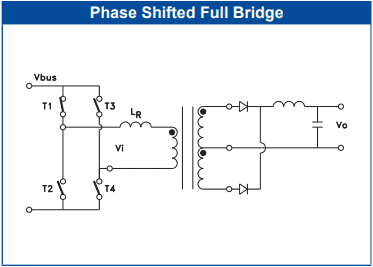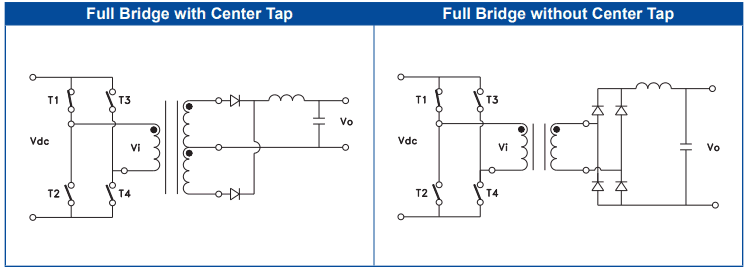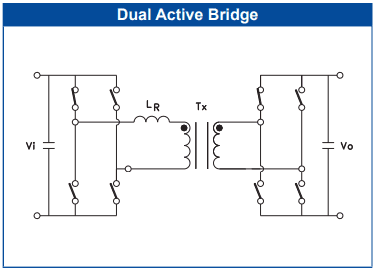Phase Shift Full Bridge Product Application Notes
Full Bridge Converter Topology (FB)
Full Bridge switching topology has been developed over decades for high power regulators, especially over hundred watts to thousand watts. In the old days, the pulse width modulation (PWM) switching frequency was only low KHz, whereas it is over hundred KHz now.
With newer technology and materials, the overall size of converters and regulators has been reduced by 5x, 10x and more across the board. Moreover, efficiencies have also been improved from only 70% to now >95%, and continually getting better by developing newer switching topologies with the same fundamental concept.
MPS Design Engineers have been involved in research and development in the power conversion industries since the 1980s and have designed and developed countless magnetic components, including linear and switching transformers, common mode chokes and inductors, to meet and surpass industry requirements over the years.
Phase Shifted Full Bridge (PSFB)
 PSFB DC-DC converters are mostly used in high DC bus voltages (example: PFC output) and low output voltage with high power applications like battery charging systems and renewable energy systems.
PSFB DC-DC converters are mostly used in high DC bus voltages (example: PFC output) and low output voltage with high power applications like battery charging systems and renewable energy systems.
An additional Resonant Inductor is added into the PSFB circuitry, which provides ZVS (Zero Voltage Switching) resulting in lower switching losses and improved efficiency.
Dual Active Bridge (DAB)
Bidirectional Dual Active Bridge (DAB) is mainly used to interface Solar, Battery Storage, and Grid-Tied Inverters. It is similar to PSFB switching topology but the output will be another 4 switches for rectifiers to generate the bidirectional function.
The MPS Industries Engineering Team fully understands the importance of meeting the efficiency requriements, while simultaneously keeping an eye on our customers’ budget.
During the design and development of our Resonant Inductors and Full Bridge Transformers, we start with the quality, reliability and safety. Our engineers are well familiar with industry safety standards, including but not limited to UL, CSA, VDE, IEC, PPAP, MIL and IPC.
Then we precisely calculate the Copper, Core, Skin Effect, Proximity, Coupling, Flux Balance and Harmonics that will affect the function and performance of the magnetics. MPS Design Engineers select the materials and construction to meet operating conditions and safety standards, while minimizing size and cost.
Take the Next Step
Whether it’s a stock or custom transformer solution, MPS has the capabilities to help you thrive.

